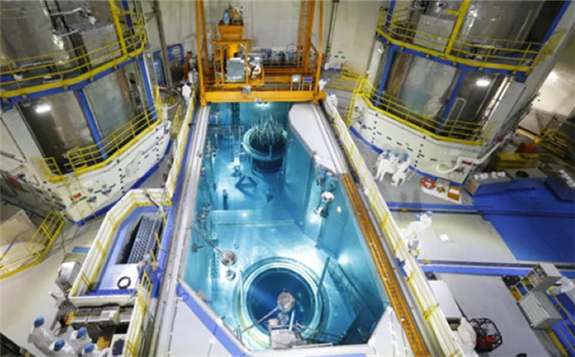Loading of nuclear fuel into unit 5 of the Tianwan nuclear power plant in China's Jiangsu province was completed on 9 July, China National Nuclear Corporation (CNNC) announced the following day. Fuel loading at Tianwan 5 "laid the foundation for subsequent grid-connected power generation," it added.

Units 5 and 6 at Tianwan - Tianwan Phase III - are domestically-designed ACPR1000 pressurised water reactors (PWRs) that will produce 1080 MWe each when commissioned. First safety-related concrete was poured for unit 5 on 27 December 2015, with that for unit 6 poured on 7 September 2016. CNNC plans to put both units 5 and 6 into commercial operation by the end of 2021.
The first four units at the Tianwan site are Gidropress VVER units supplied by Russia, as will be the seventh and eighth.
Tianwan Phase I - units 1 and 2 - was constructed under a 1992 cooperation agreement between China and Russia. First concrete was poured in October 1999, and the units were commissioned in June 2007 and September 2007 respectively. Tianwan Phase II - units 3 and 4 - are similar to the first stage of the Tianwan plant, comprising two Russian-designed 1060 MWe VVER-1000 PWRs. First concrete for unit 3 was poured in December 2012, while construction of the fourth unit began in September 2013. Unit 3 entered commercial operation in February 2018, with unit 4 following in December.
In March 2019, a general contract for Phase IV - units 7 and 8 - of the Tianwan plant was signed between AtomStroyExport, the engineering division of Russian state nuclear corporation Rosatom, and CNNC.
When all eight units are in operation Tianwan will become the largest nuclear power plant in the world with eight units and a total generating capacity of about 8100 MWe.
The Tianwan plant is owned and operated by Jiangsu Nuclear Power Corporation, a joint venture between CNNC (50%), China Power Investment Corporation (30%) and Jiangsu Guoxin Group (20%).